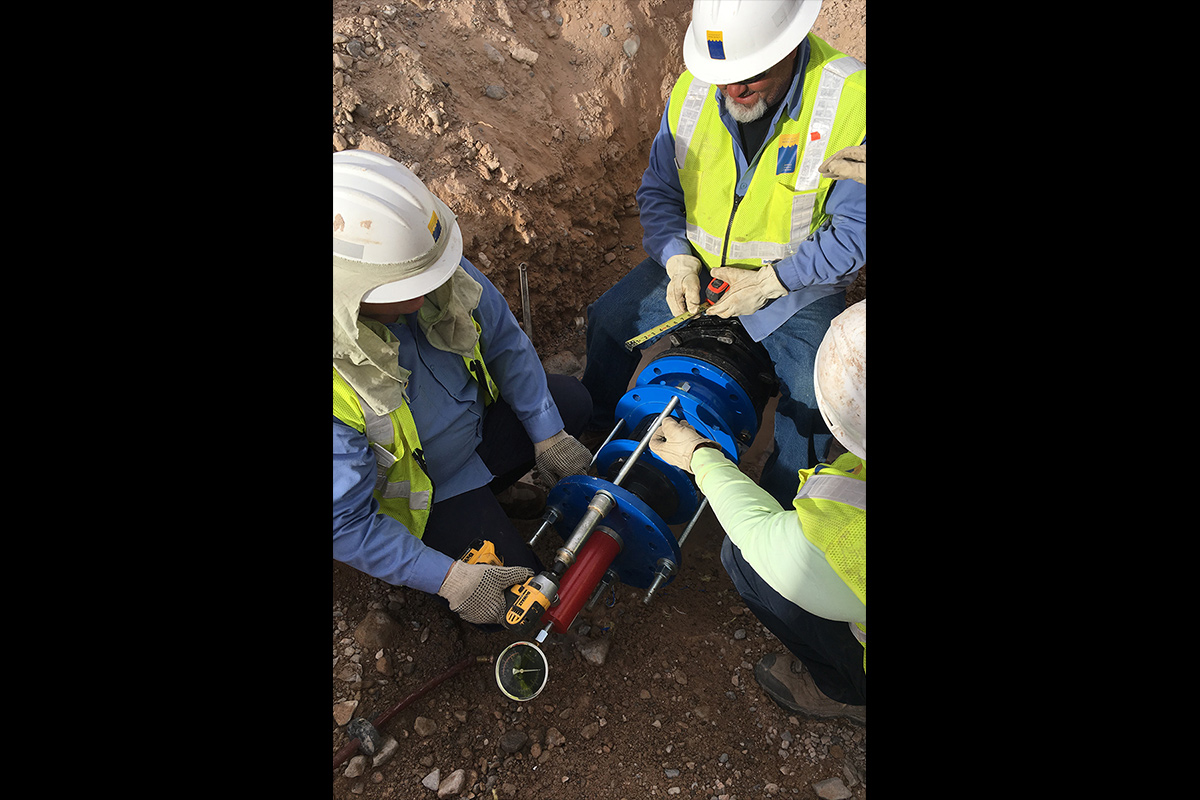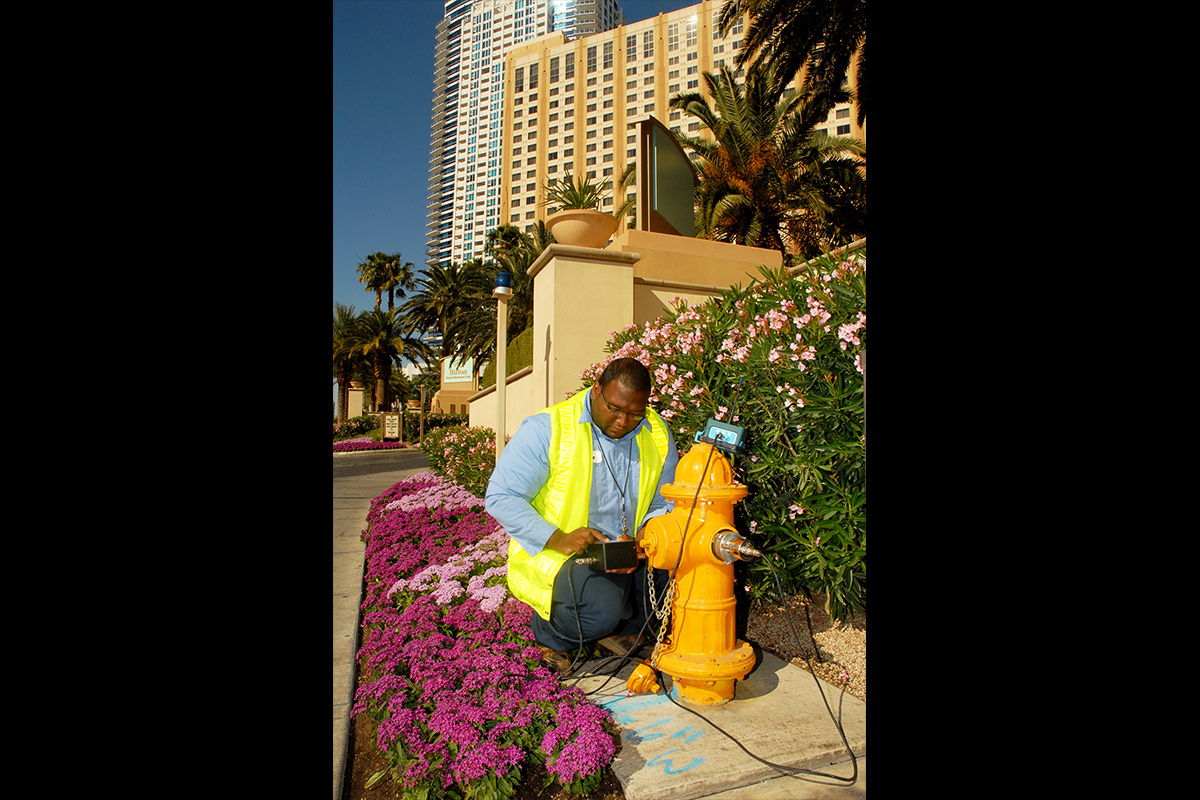


The key to a strong, lasting relationship, it has long been said, is the ability to listen. The Las Vegas Valley Water District (LVVWD) has taken that sage advice to heart, employing a high-tech acoustic system to “listen” for leaks throughout its 4,500-linear-mile water distribution network and maximize the usable life of the community’s water infrastructure.
One of the biggest challenges associated with maintaining a vast labyrinth of underground pipelines is that they’re, well, buried. As water mains age—some are now more than half a century old—the LVVWD must determine when to replace them. Doing so too early represents a waste of material, like replacing a car’s tires while they still have plenty of tread. On the other hand, waiting too long can result in disruptive and potentially expensive emergency repairs, the equivalent of being stuck on the side of the road.
In Southern Nevada, however, it’s about more than just dollars and cents. Given the community’s ongoing efforts to conserve water and an impending shortage on the Colorado River—which provides 90 percent of Las Vegas’ supply—the LVVWD continuously works to minimize leaks in its distribution network. As a result of the not-for-profit agency’s ongoing efforts in this regard, the community’s water system has a main break rate eight times’ lower than the national average and a near-world-class water loss rating.
Some types of material, such as steel water mains installed a generation ago without cathodic protection, can be susceptible to corrosion due to continual exposure to water and Southern Nevada’s soils. To identify and pinpoint any leaks, the LVVWD utilizes an acoustic monitoring system that detects the unique sound emitted by water escaping a pipeline. To listen in, a device is usually mounted temporarily to a fire hydrant. Technicians then attach another device to an adjacent hydrant to bracket the leak’s location. Using that information and factoring in the speed at which sound travels through water, they can calculate the leak’s precise location. This approach saves time, money and water, as Southern Nevada’s sandy soils can prevent small leaks from surfacing and complicate detection.
A similar process can be used to assess the overall condition of pipelines noninvasively, avoiding the need to dig up and cut a pipeline in order to verify its integrity. In one case, the LVVWD was contemplating replacing a 6.5-mile stretch of pipeline dating from the 1950s after a main break revealed that the pipe’s steel walls were wearing thin. Before proceeding with the approximately $10 million project, however, LVVWD maintenance engineers decided to use acoustic equipment to determine whether the weakening was consistent throughout the pipeline span or isolated to specific areas. That decision paid off, as they discovered that only 15-20 percent of the pipes had lost a significant amount of their original thickness. Utilizing this technology allowed them to focus on the areas of concern, extending the life of the remaining pipeline.
Acoustic monitoring is only one tool the LVVWD uses to optimize the life of the community’s water infrastructure. It also employs a different type of technology to identify pressure spikes within the system, which can stress pipes and cause line breaks. Just as people monitor their blood pressure, this equipment measures how much force is being exerted on the interior walls of the pipeline by the operation of pumps and valves. Because these “pressure transients” often occurs in the blink of an eye, the equipment takes 128 measurements a second, charting the fluctuations in fine detail. Armed with this data, operators can adjust pumping rates and other variables to minimize the potentially destructive spikes.
The more the LVVWD “listens,” the better able it is to minimize water loss and prevent service interruptions. For more information about the LVVWD’s water system, visit lvvwd.com.
Members of the editorial and news staff of the Las Vegas Review-Journal were not involved in the creation of this content.


